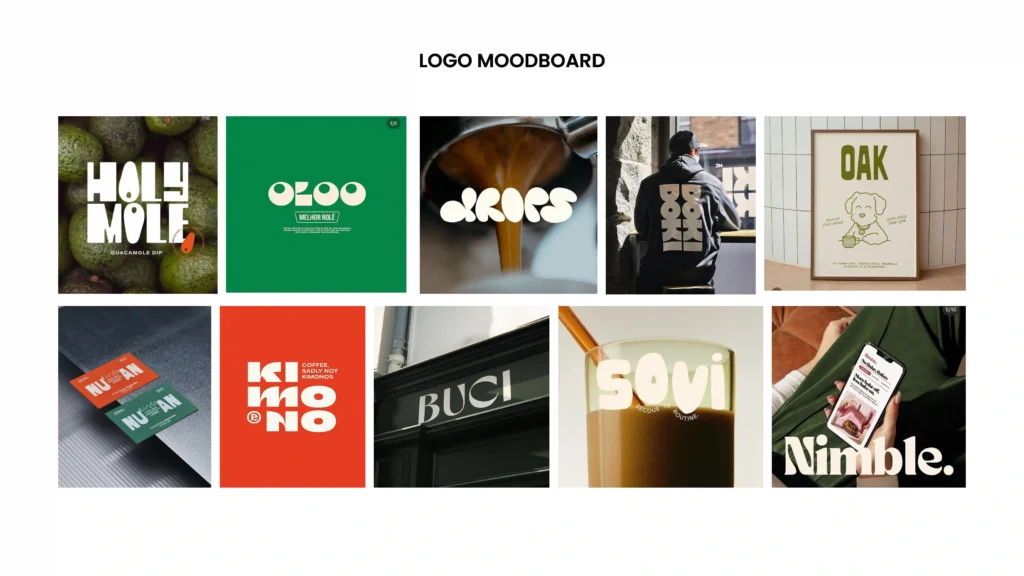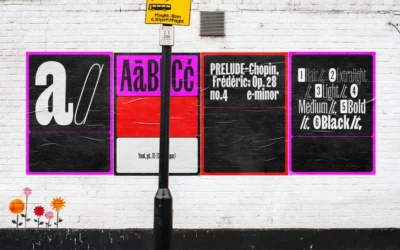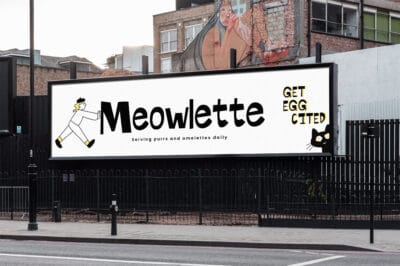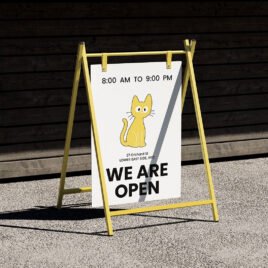Straight from industry leaders, here are effective portfolio tips to help you secure jobs and connect with the right clients.
Feeling overwhelmed by the job search? Remember this: social media might get you noticed, but your portfolio is what seals the deal. Too often, creatives rush to put one together, thinking it’s sufficient, but that rarely leads to success.
Your portfolio is more than a collection of projects—it’s a narrative of your skills, your thought process, and your professional value. Investing time to perfect it is crucial.
What makes a portfolio truly impressive? We consulted with designers, creative directors, and recruiters who evaluate countless portfolios annually to gather their best advice.
Discover their key recommendations below. For the complete discussion, check out LinkedIn or join our community, The Studio (not a member? It’s easy and free to sign up).
Tell a Story
Many believe that a standout portfolio is solely about perfect, eye-catching designs. However, the true strength comes from the narrative that accompanies your work.
Iain Worgan, a brand development expert and co-founder of In-Col Studio, emphasizes:
“I’m interested in the rationale behind your creations as much as the final product. Share the project’s brief, the main obstacle, and your strategy to overcome it. Demonstrating this effectively shows me you can articulate ideas, stand by them in client discussions, and collaborate well with others.”
Matthew Gallagher, a designer and artist at Designomatt, supports this view:
“Your portfolio should narrate your journey, your skills, and your development. For every piece, detail the issue, your approach, the outcome, and crucially, your contribution to the project’s success.”

Show Your Process
While social media often showcases only the flawless final product, a portfolio should reveal the authentic, sometimes chaotic journey behind the creation.
Becky Colley, a UX designer, notes:
“I appreciate insights into what you learned throughout the project. No project is without flaws—there’s always room for improvement. Reflecting on these aspects demonstrates self-awareness and a commitment to growth.”
Antonio Serrano, creative director at [BAMF] Spain, echoes this sentiment:
“I’m interested in the progression that led to the final result—initial drafts, discarded ideas, and how the concept matured. Stunning final images are increasingly commonplace and lack the depth of the creative process.”
Matt Nudds, a creative recruiter at Factory, further emphasizes:
“Even imperfect, coffee-stained sketches hold value if they illustrate the strategic or conceptual development.”
Focus on Quality, Not Quantity
It’s natural to want to showcase all your work, but an effective portfolio requires selective curation.
Nvard Yerkanian, a graphic designer and illustrator, suggests:
“Think of your portfolio as a highlight reel, not a complete collection. Select pieces that align with the kind of work you aspire to do. A handful of cohesive, high-quality projects will make a stronger impression than a large number of varied, less relevant ones.”
Ali Martín Carrillo Filsoof, founder and creative director at Design Dept, adds:
“Opt for a smaller selection of your best work. Be transparent and modest about your contributions. Allow each project space to shine and let your personal ethos and character emerge.”
Juan Carlos Morales, a creative director, cautions:
“Unless it showcases a distinctive talent, exclude work that doesn’t pertain to your main focus. For instance, if you’re specializing in graphic design, including unrelated art forms like paintings or photos may dilute your portfolio’s impact.”
Add Real-World Context
How you display your projects is as crucial as the projects themselves.
Nvard highlights:
“Incorporate realistic mockups, photographs of the work in use, or contextual images to demonstrate how your designs function in the real world.”
Tony Clarkson, a graphic designer at And Something Studio, advises:
“Ensure your mockups are appropriate for the project’s intent. For example, don’t place a poster design on a street wall if it was designed for a different setting.”
This may seem straightforward, yet many portfolios overlook this, which can undermine their professionalism.
Tailor It to Your Audience
A generic portfolio often fails to make a strong impression.
Stefan Smit, an illustrator at Made by STFN, recommends:
“Your portfolio should be customized to appeal to the specific clients you wish to attract. This targeted approach fosters an immediate connection.”
Charlie Haywood, founder and creative director at Hotfoot Design, elaborates:
“Top candidates research our company, understand our clientele, and tailor their portfolios accordingly, making their submission feel uniquely suited to us.”
Bianca Bramham, managing agent at The Jacky Winter Group, emphasizes the importance of diversity for illustrators:
“If your portfolio is limited to nature themes like plants and animals, a sports brand may hesitate to engage you without evidence of your ability to handle sports-related illustrations.”
Get the Technical Side Right
The technical aspects of your portfolio can significantly impact its effectiveness.
Stew Calladine, a graphic designer at Stewart and Design, advises:
“Ensure your portfolio is easy to navigate. Often, initial reviews are conducted by hiring managers who may not be designers. They need to access your work without difficulty.”
He also suggests:
“Consider providing a PDF version. Though it may seem traditional, PDFs are user-friendly. Include a table of contents and hyperlinks for seamless browsing.”
Oli Furze, design director at Dawn Creative, highlights the importance of attention to detail:
“A CV with poor design choices—like generic fonts or improper spacing—can deter me from even viewing the portfolio. Every element you present is an opportunity to showcase your professionalism.”
Additionally, keep in mind that reviewers typically spend only a brief moment on each portfolio. Iain notes:
“Any obstacle that prevents quick access to your work—such as passwords, large file sizes, or excessive clicking—can cause me to lose interest rapidly.”
Show Who You Are
When evaluating your portfolio, reviewers are assessing your thought process, not merely your visual skills.
Michelle Bower, associate strategy and transformation director at Dalziel & Pow, states:
“During portfolio reviews, I seek individuals who can contribute uniquely to our team—those who not only fit in but enhance our culture. What drives you? What unique viewpoint do you offer?”
While technical proficiency and visual appeal are important, the most compelling portfolios showcase the creator’s personality. They narrate journeys, reveal methodologies, illustrate problem-solving capabilities, and build trust.
Ultimately, a portfolio’s purpose extends beyond aesthetic appeal—it’s about demonstrating your ability to think critically, communicate effectively, and address challenges innovatively. This is what distinguishes your portfolio from those that are merely visually pleasing.
For more information on branding, graphic design, illustration, product design, or packaging design, Typefaces visit Brandlic.



